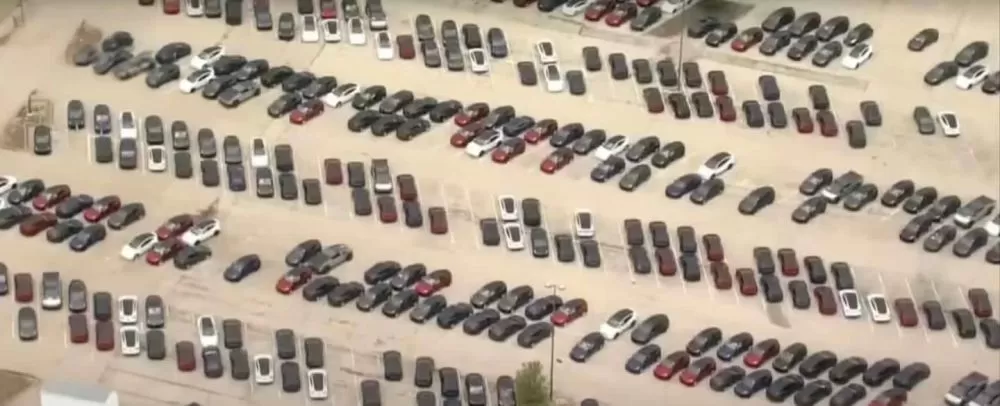
In the second quarter of 2025, Tesla faced severe inventory pressure in the United States. Satellite images show that its unsold vehicles have formed a large-scale open-air parking lot. Hundreds of new cars are parked in a demolished shopping mall parking lot in Chesterfield, Missouri alone, and the official delivery center three miles away has long been saturated. Similar scenes have reappeared in Farmington Hills, Michigan and other places. About 100 Cybertrucks were forced to be stored in the open air, and the sales of this model plummeted by 50% year-on-year.
Data shows that Tesla produced 433,000 vehicles in Q1 2024 but only sold 387,000 vehicles, with a backlog of 46,000 vehicles. This contradiction continued to intensify in 2025. Models such as Cybertruck still found it difficult to boost sales by increasing discounts, which eventually forced Tesla to slow down the production line. Chief Financial Officer Vaibhav Taneja admitted that "production and order misalignment" was the main reason, and the company's free cash flow was recorded as -2.5 billion US dollars (including AI R&D expenses).
Tesla's predicament reflects the slowdown in the global electric vehicle market:
Chinese dealers' inventory reached a 57-day high, 84.4% of which had price inversions, and pure electric vehicle inventory surged 29% year-on-year to 850,000 vehicles. Leading automakers used unconventional means such as "registering used cars" to clear inventory.
Analysts pointed out that this vicious cycle of "more production and more losses" has aroused the capital market's vigilance against industry debt risks. Whether Tesla can achieve the promised inventory improvement and cash flow turnaround in Q2 will become a key indicator for observing the direction of the industry.